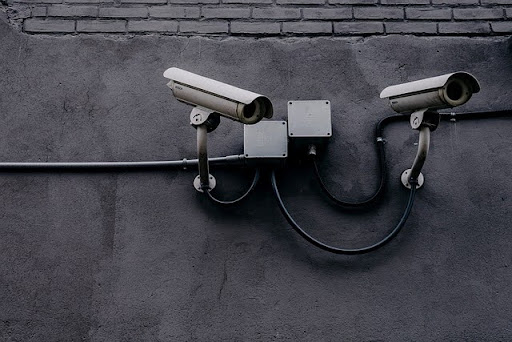In today’s logistics-driven economy, warehouse security has never been more critical. According to a 2023 report by the National Retail Federation, U.S. businesses lose over $50 billion annually to theft, with warehouses being prime targets for both internal and external threats.
In addition, data from the FBI shows that property crimes, including burglary and vandalism, account for 60% of all reported crimes in industrial areas. As warehouse operations become more automated and inventory values increase, the risks associated with theft, vandalism, and even cyberattacks continue to grow.
To combat these evolving threats, warehouses must adopt a comprehensive, technology-driven security approach. From AI-powered surveillance to access control systems, leveraging modern security tools is no longer an option—it’s a necessity.
Here are 10 essential tools that can help protect warehouses from both physical and digital threats.
1. AI-Powered Video Surveillance
AI-powered video surveillance is at the core of modern warehouse security. It offers real-time monitoring and advanced analytics that can identify suspicious behavior, detect unauthorized personnel, and even recognize threats like firearms.
Example: Coram AI’s real-time monitoring system uses advanced AI analytics to detect and alert on potential threats, helping warehouse managers respond quickly.
2. Access Control Systems
Access control systems regulate who can enter and exit the warehouse. With options like keycards, biometric scanners, and mobile-based entry, these systems ensure that only authorized personnel have access to sensitive areas.
Common Tools: Keycard readers, fingerprint scanners, facial recognition systems.
3. Intrusion Detection Systems
Intrusion detection systems monitor for unauthorized access, typically using motion detectors, glass-break sensors, and infrared technology. When triggered, these systems send alerts to security personnel and may activate alarms.
Example: Motion sensors positioned at entry points or along warehouse perimeters.
4. Alarm Systems
Alarm systems are designed to respond immediately to detected breaches, fires, or emergencies. Modern alarms are integrated with surveillance and monitoring systems, allowing for real-time alerts via mobile devices.
Smart alarm systems often integrate with video cameras and mobile apps for remote alerts.
5. Perimeter Security Systems
Perimeter security is the first line of defense for a warehouse. Physical barriers like fences and gates can be reinforced with motion sensors and cameras to detect attempts at unauthorized entry.
Example: Electric fences that trigger alarms when tampered with, along with motion-activated cameras.
6. License Plate Recognition (LPR) Systems
LPR systems track vehicles entering and leaving the warehouse by capturing and recognizing license plates. This technology is useful for managing deliveries, tracking trucks, and identifying suspicious vehicles.
LPR systems can be integrated with access control and visitor management systems.
7. Environmental Monitoring Sensors
Warehouse environments need protection from more than just intruders. Environmental monitoring sensors track conditions like temperature, humidity, and air quality to protect sensitive inventory.
IoT-connected sensors can alert staff to changes in conditions that might damage goods, such as rising temperatures in a cold storage area.
8. Fire Detection and Suppression Systems
Fire detection and suppression systems, such as smoke detectors and sprinklers, are essential in protecting warehouses from fire-related damage. These systems can detect early signs of fire and activate suppression mechanisms automatically.
Integrated systems can provide real-time alerts to security personnel and local authorities.
9. RFID Tracking Systems
RFID (Radio Frequency Identification) technology helps track inventory, pallets, and personnel in real time, reducing the risk of loss, theft, or misplacement of goods. RFID tags can also be integrated with security systems for automated tracking.
RFID systems offer efficient tracking of goods and materials, making it easier to manage large inventories.
10. Cybersecurity Tools
In the age of connected devices, cybersecurity is an integral part of warehouse security. Tools like firewalls, data encryption, and secure network access ensure that digital systems, including surveillance and inventory management, are protected from cyberattacks.
Securing connected devices is crucial to preventing data breaches and unauthorized access to security systems.
Conclusion
Building a comprehensive warehouse security system involves integrating both physical and digital security tools to create a multi-layered defense. With the rise of AI, advanced analytics, and connected devices, warehouse managers can now leverage tools like AI-powered video surveillance, gun detection, and remote monitoring to ensure round-the-clock security.
By utilizing these 10 essential tools, warehouses can better protect their assets, personnel, and operations from a wide range of potential threats.

